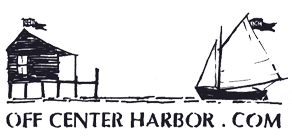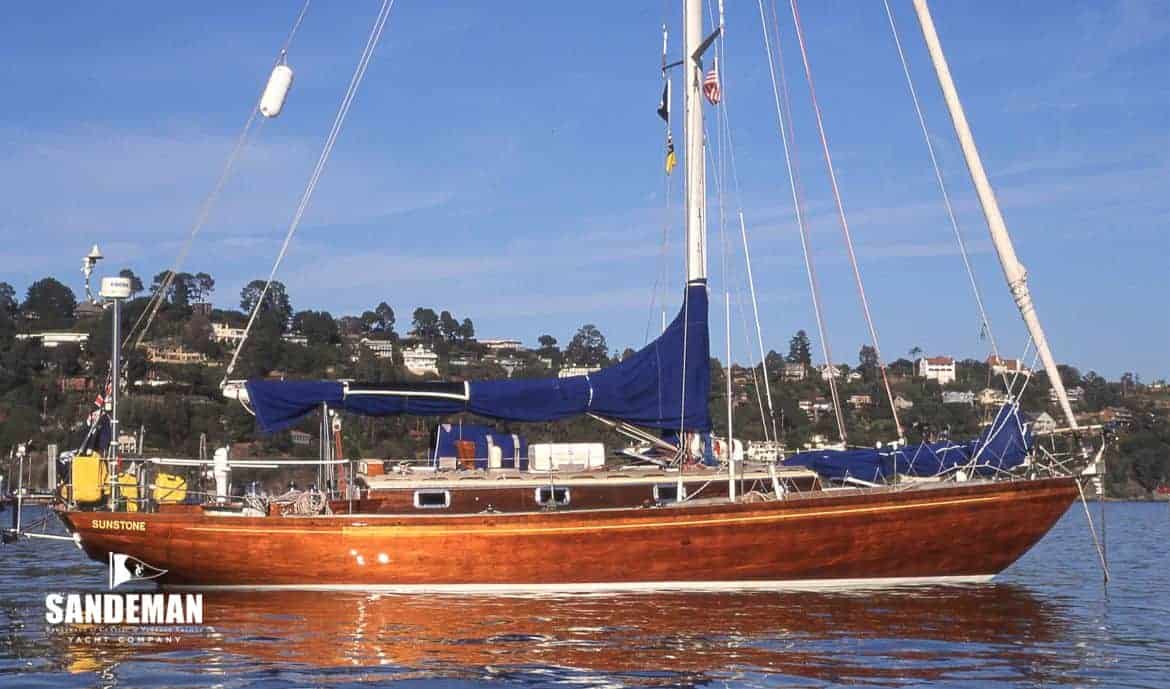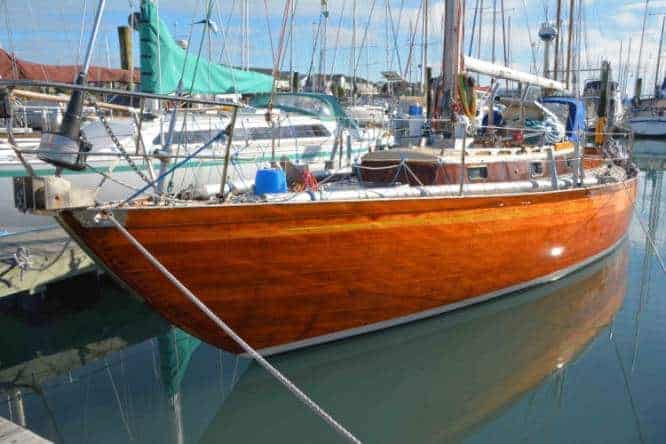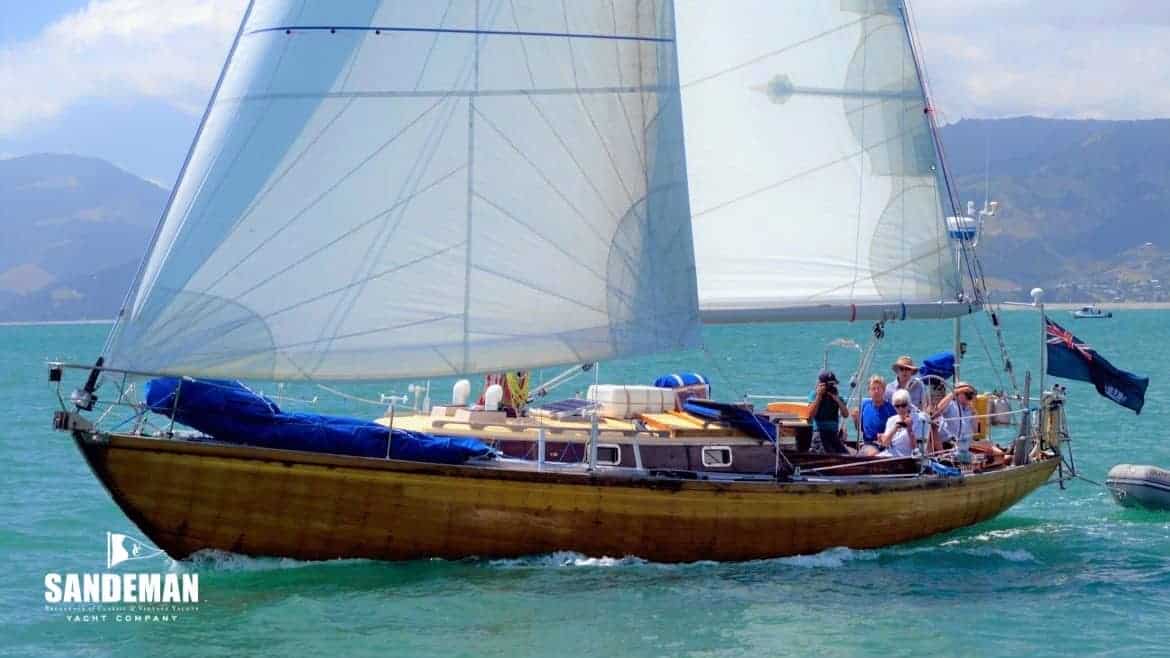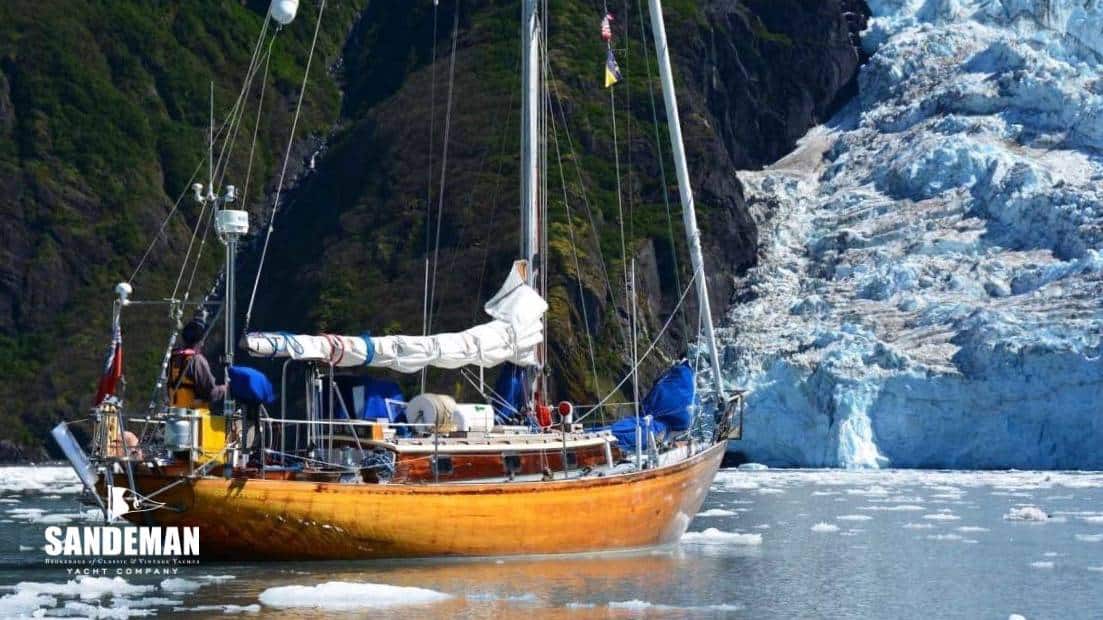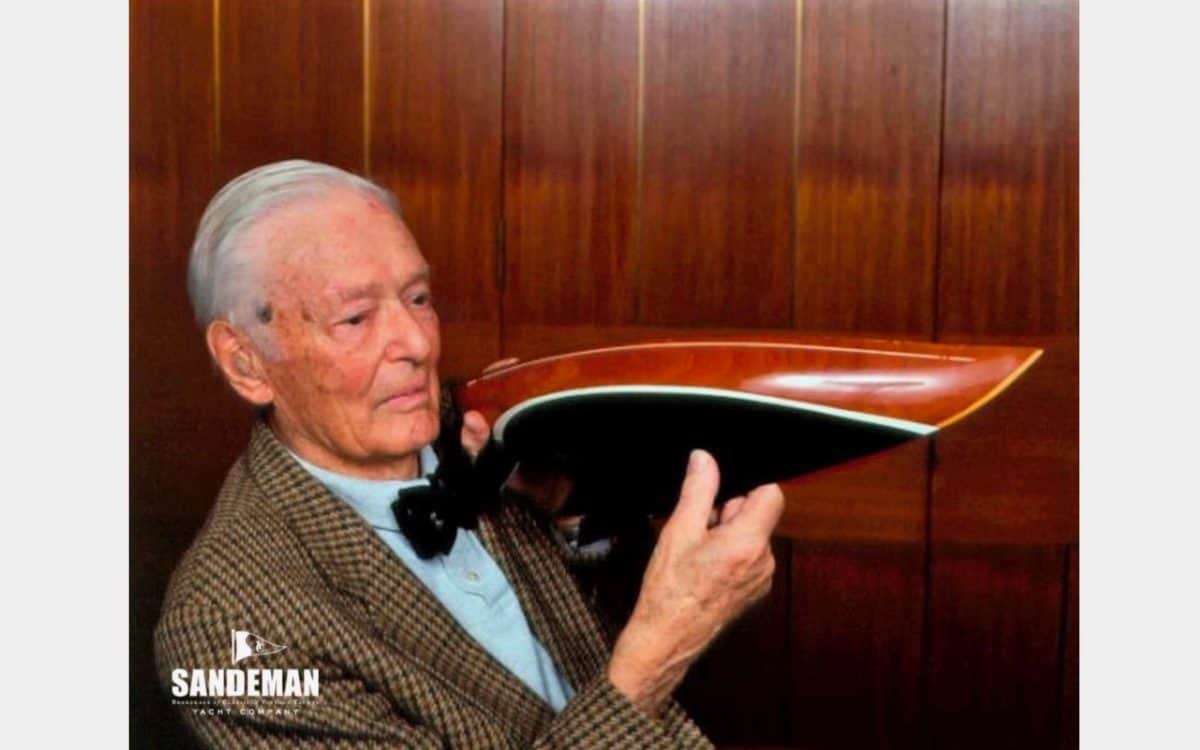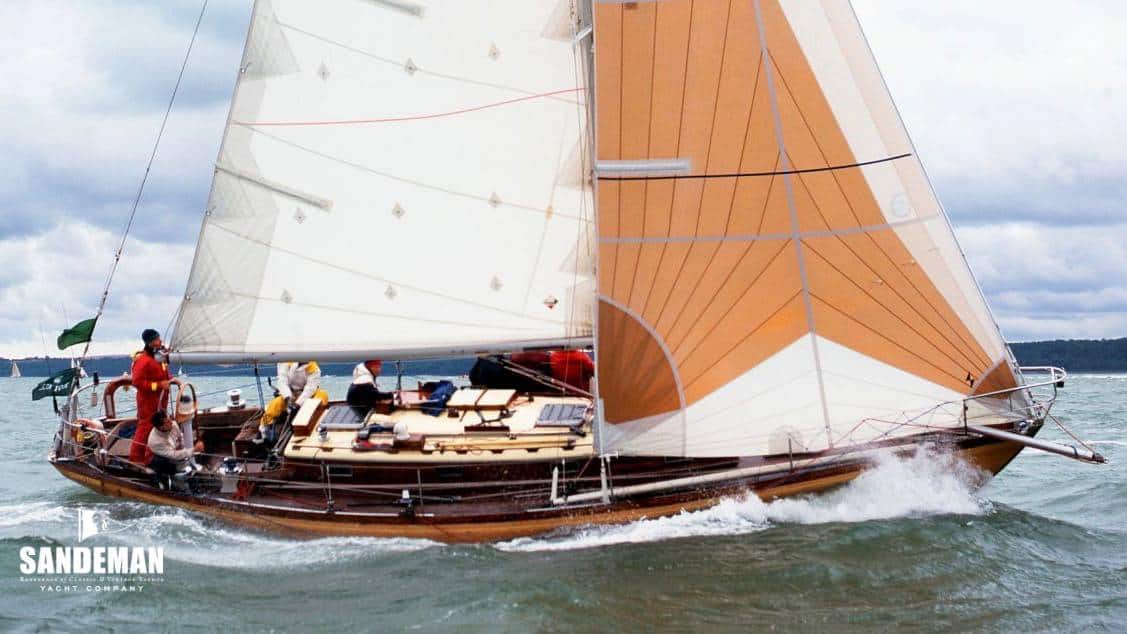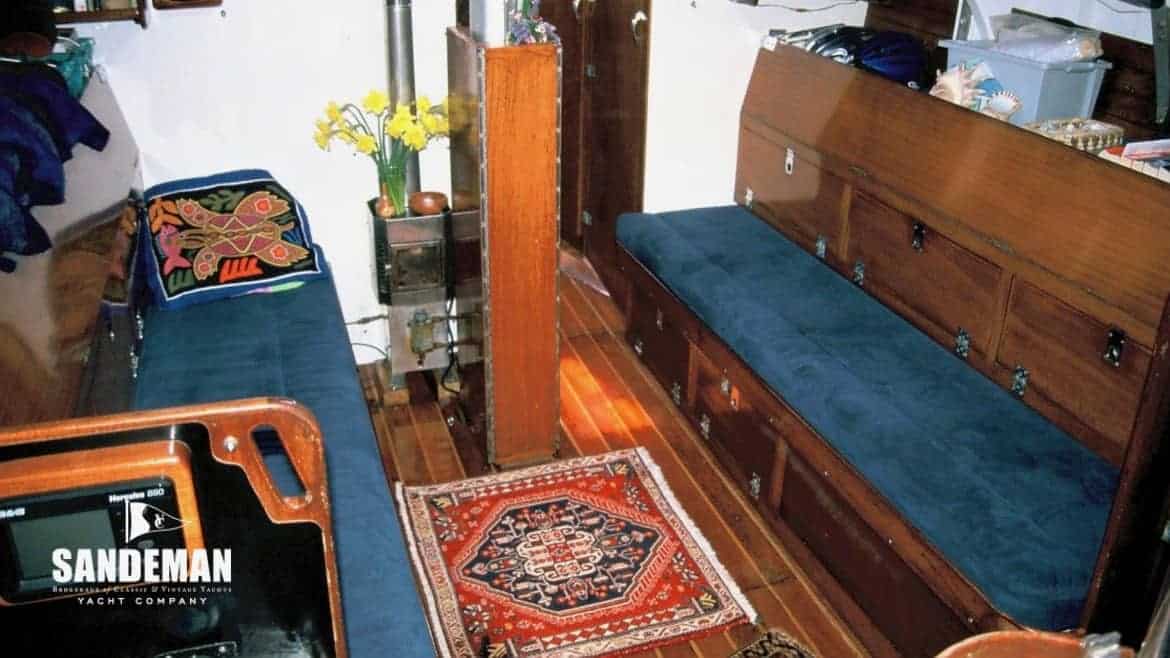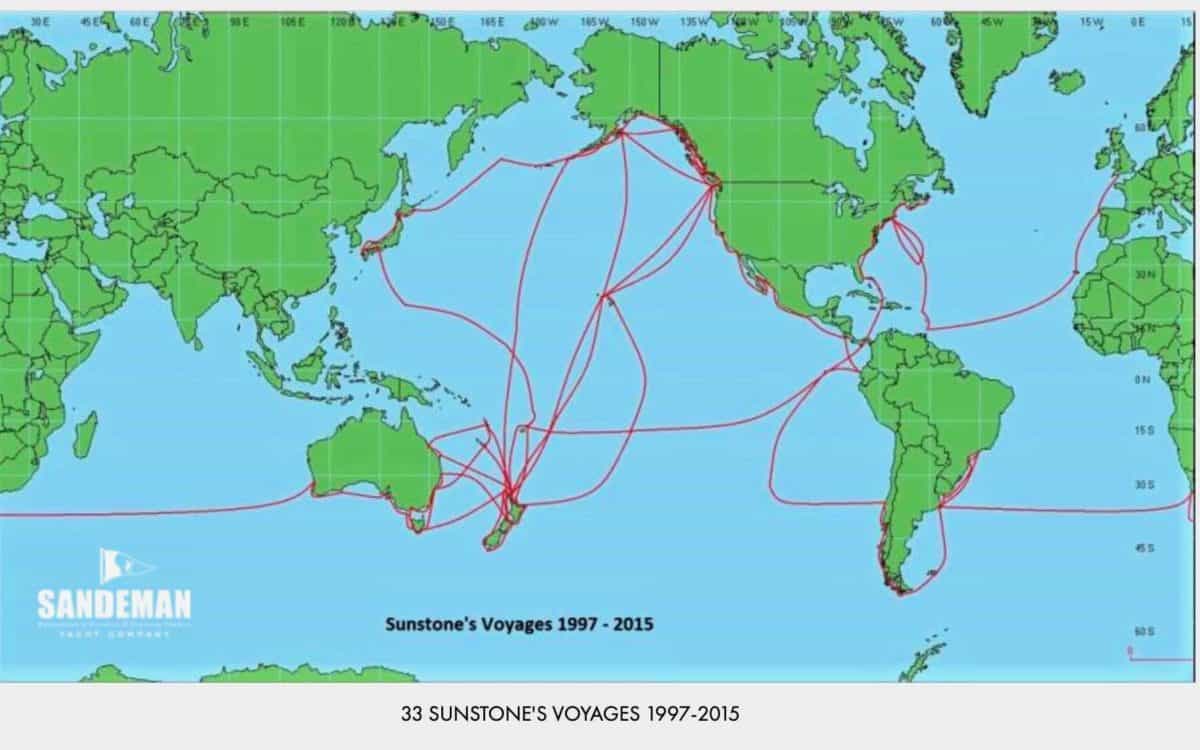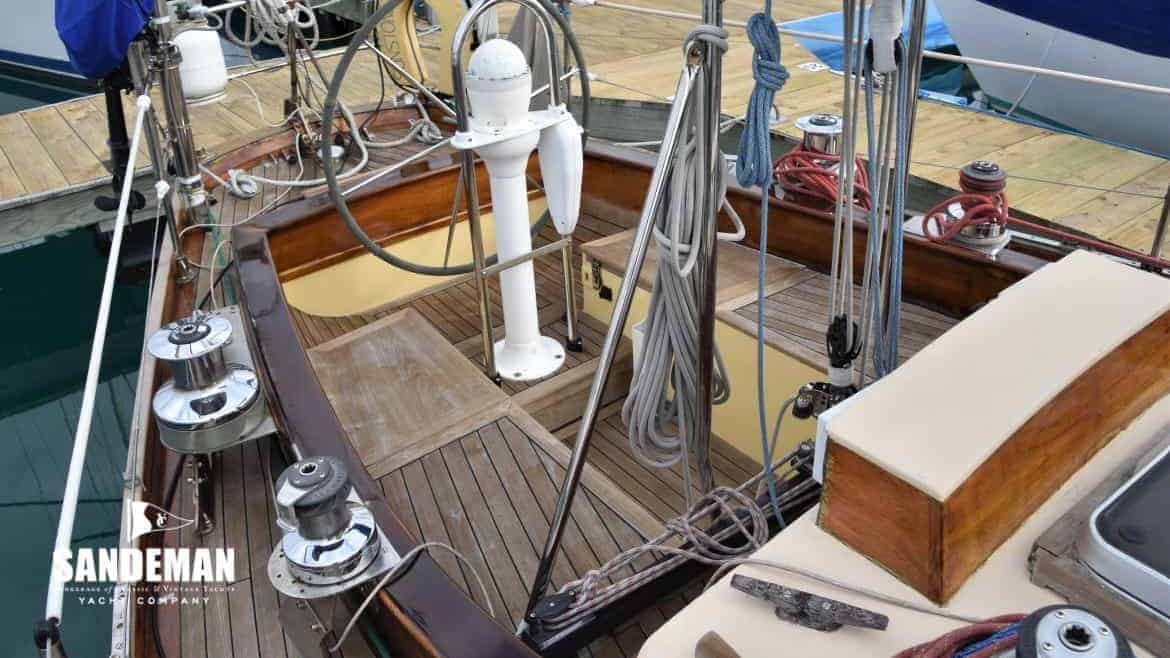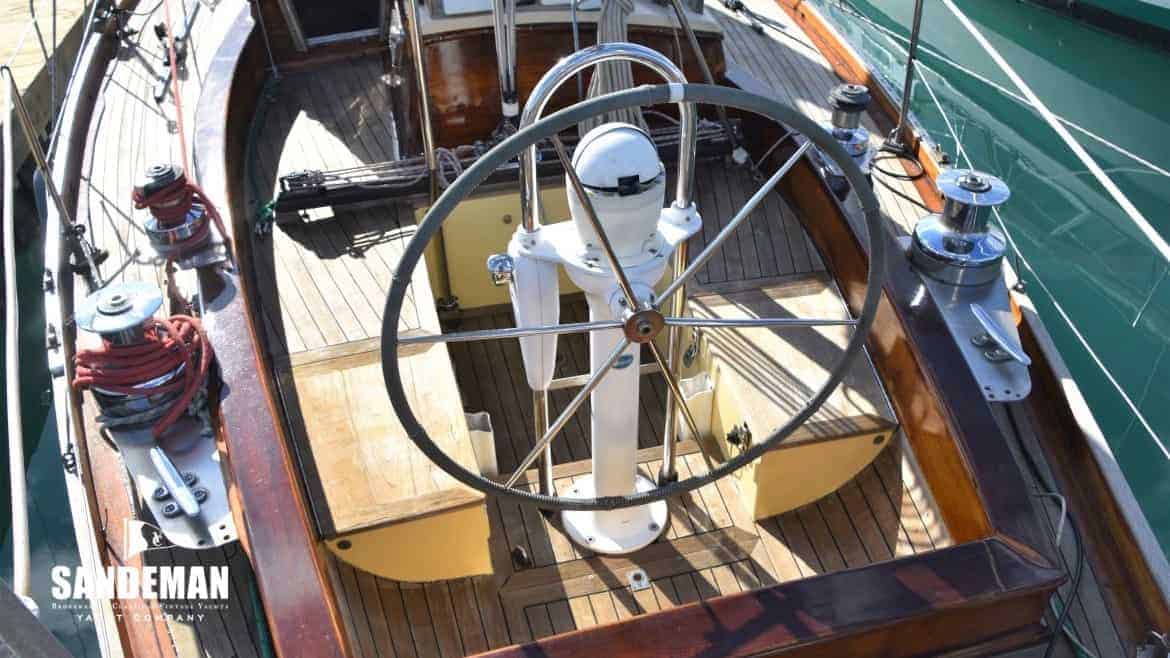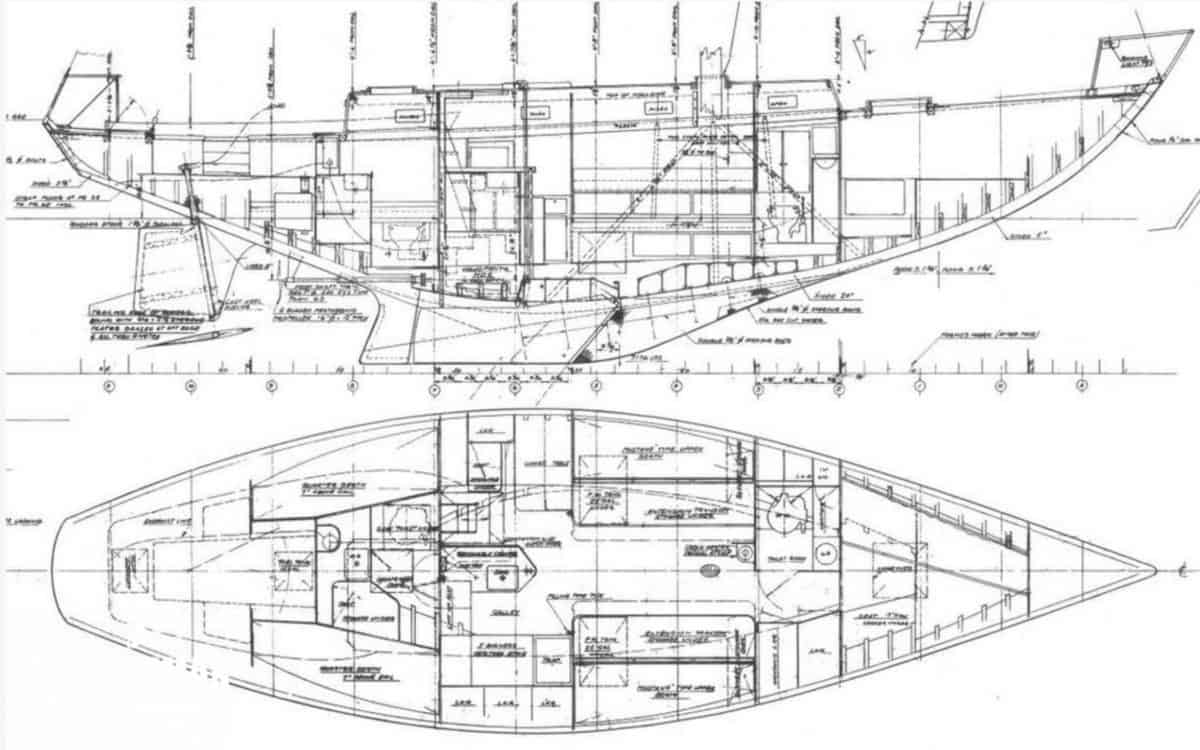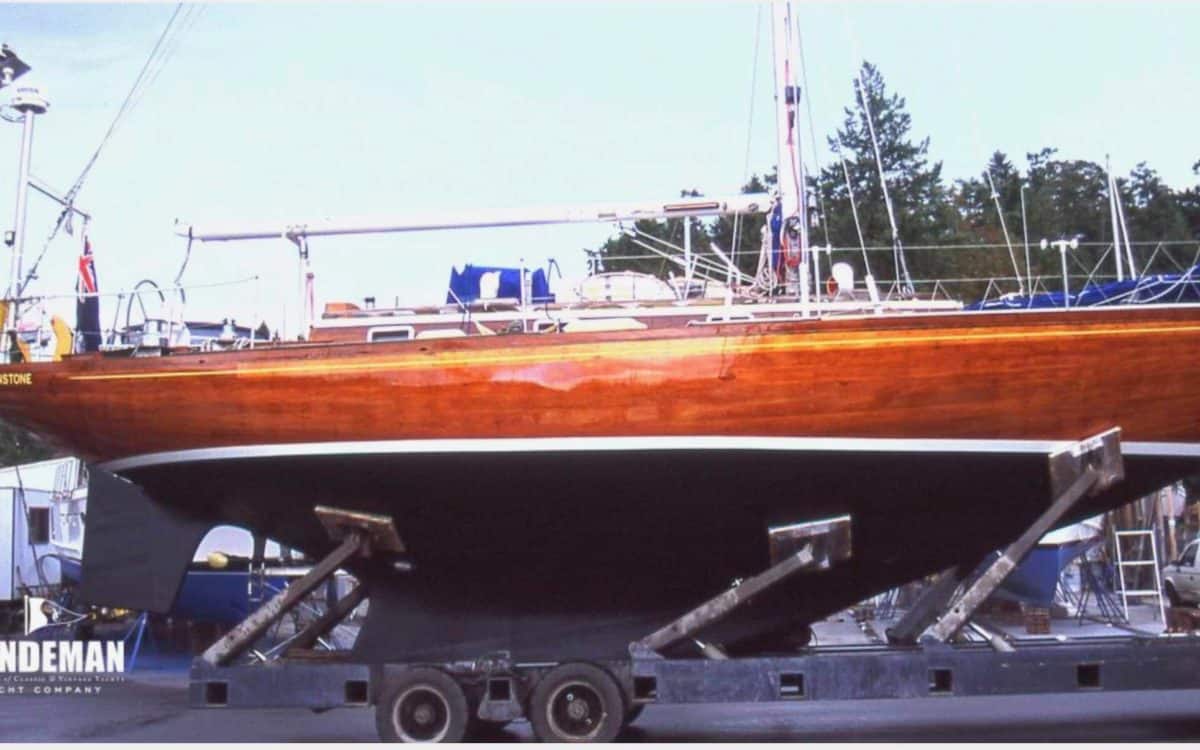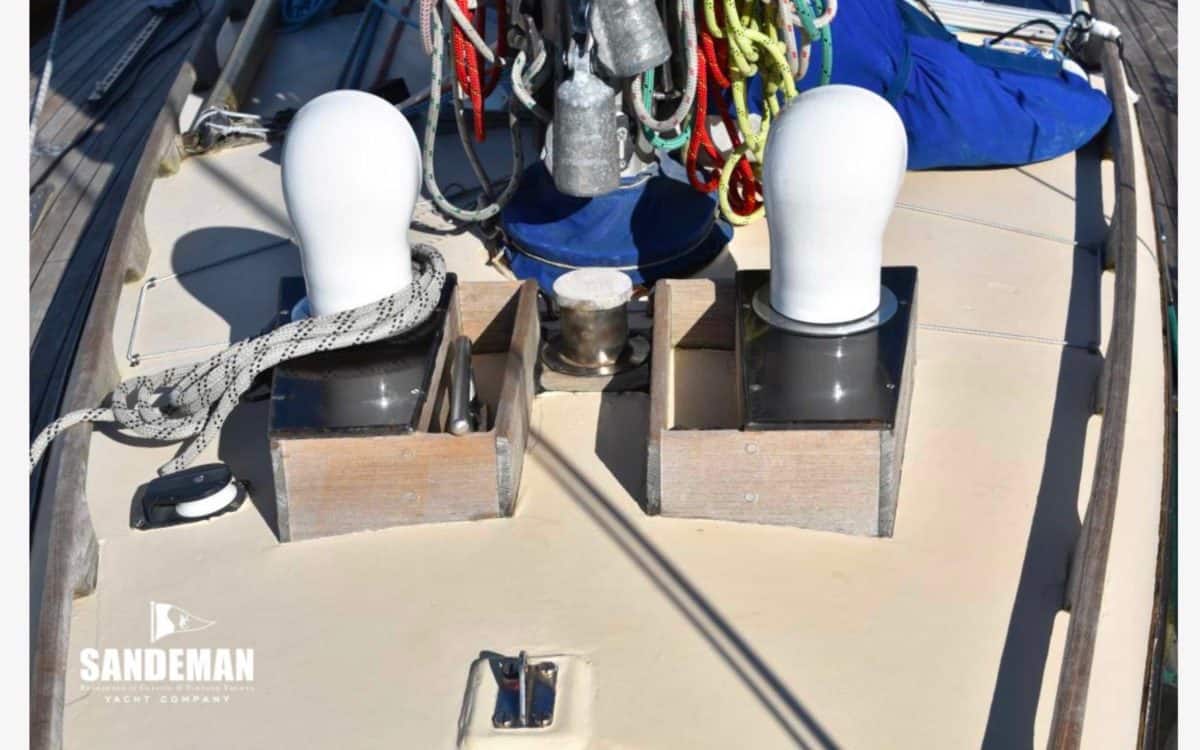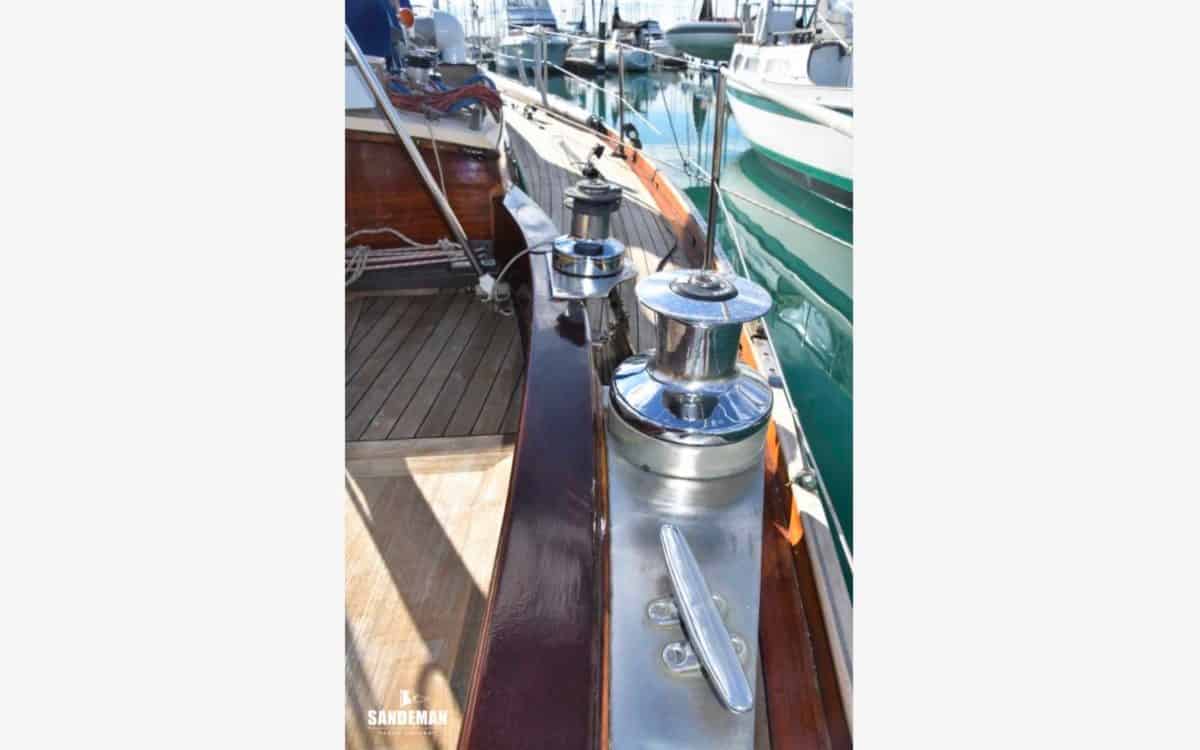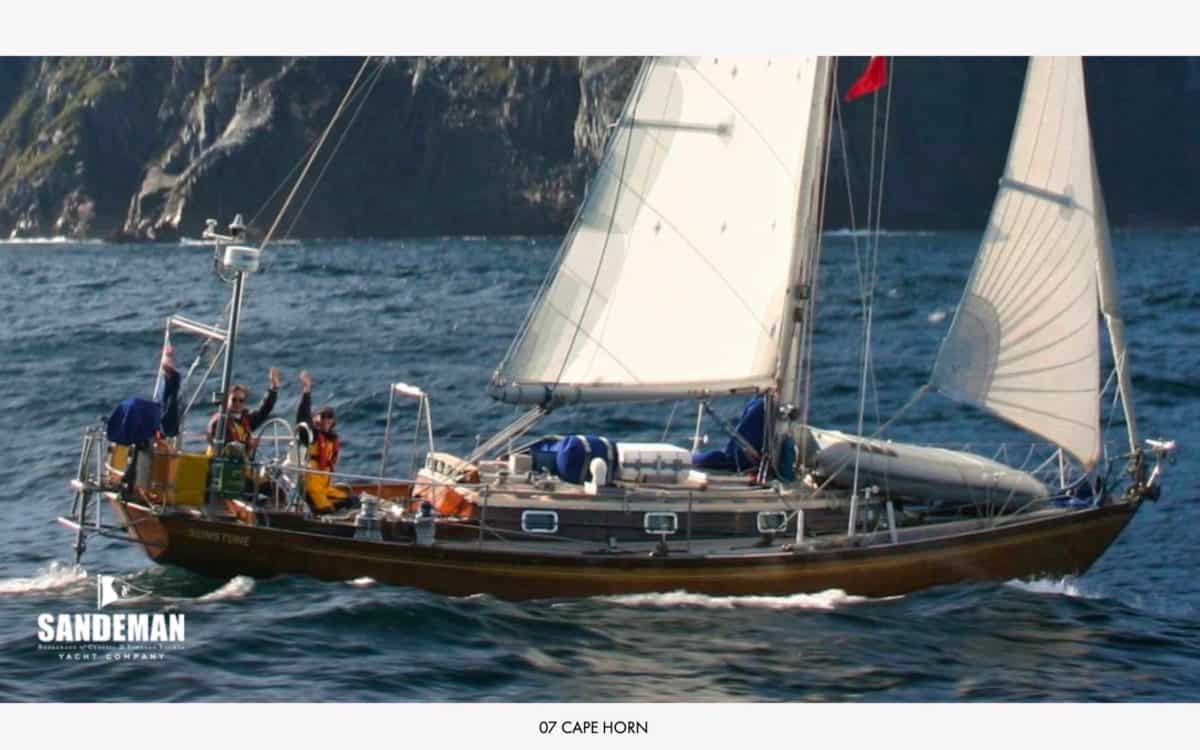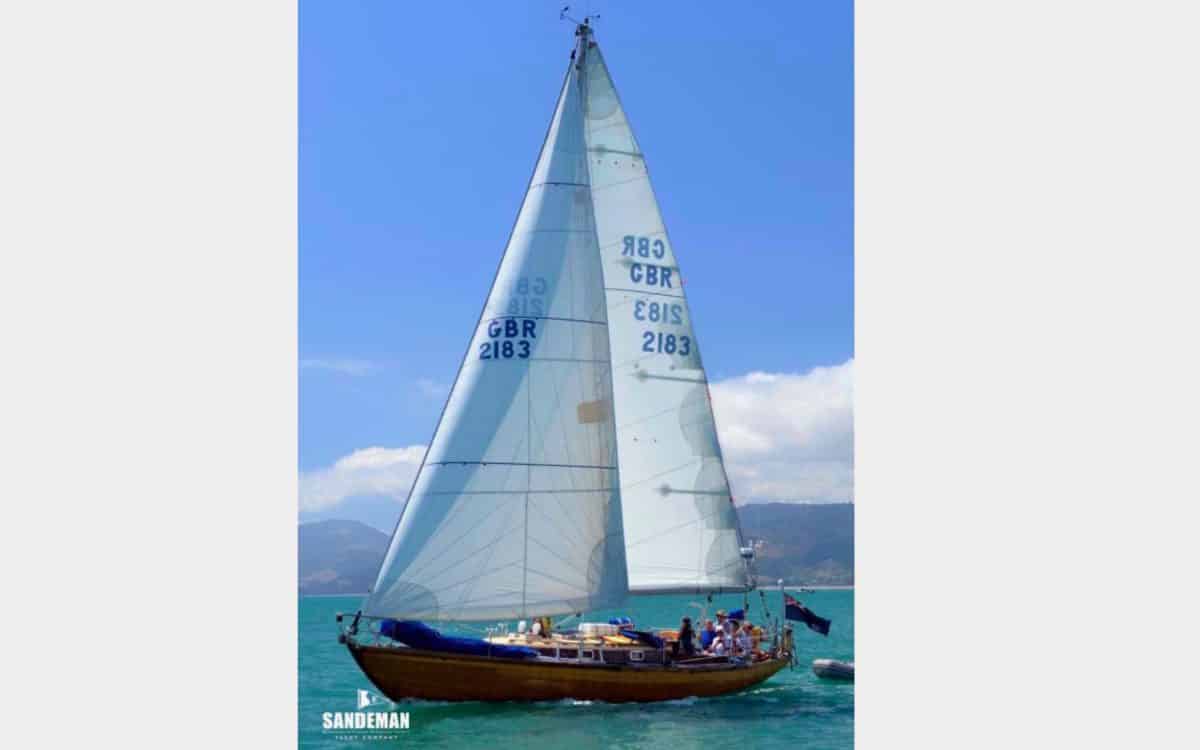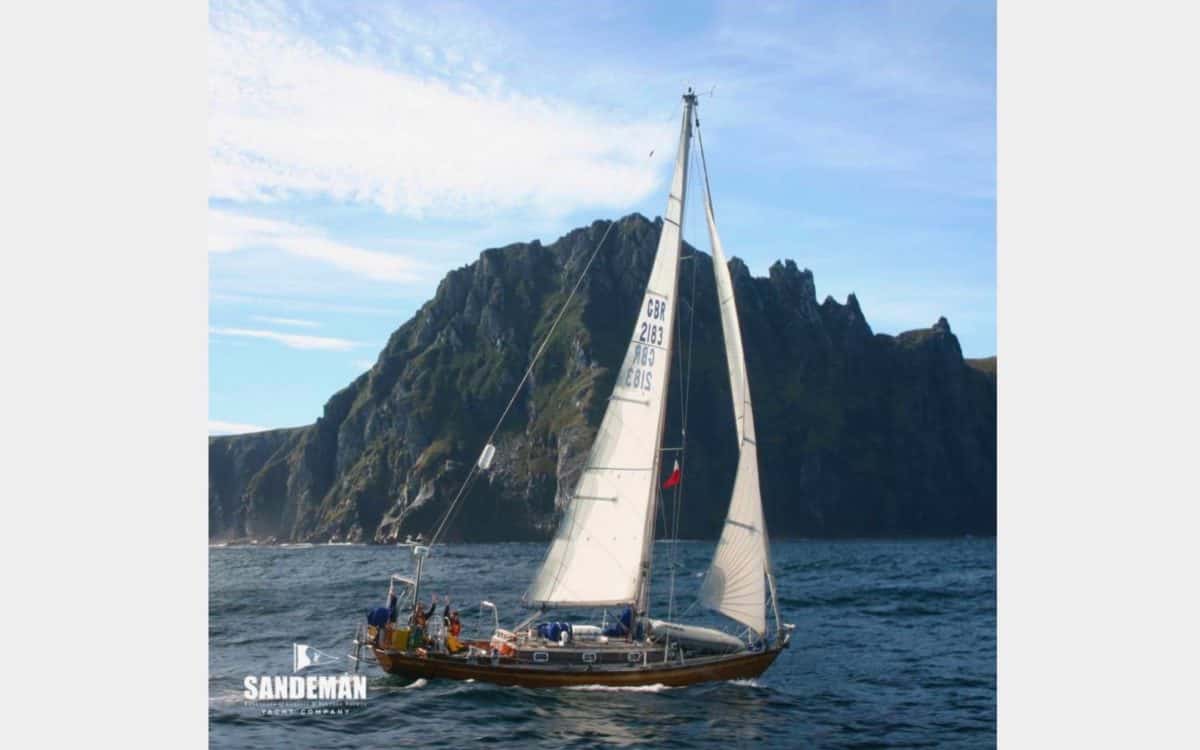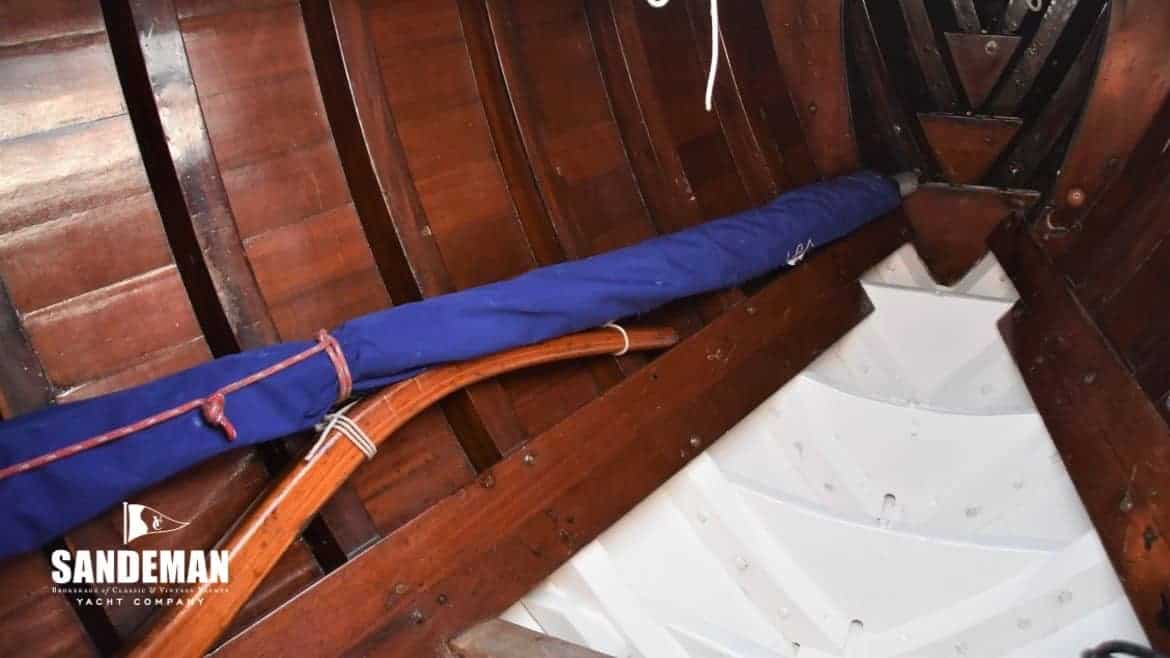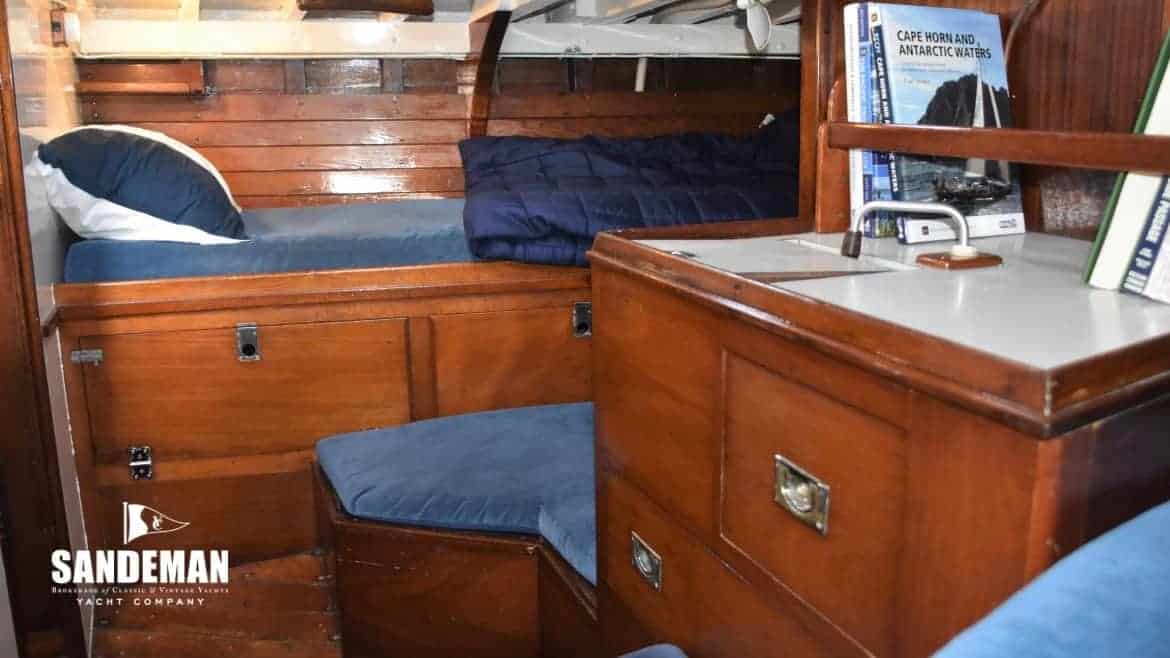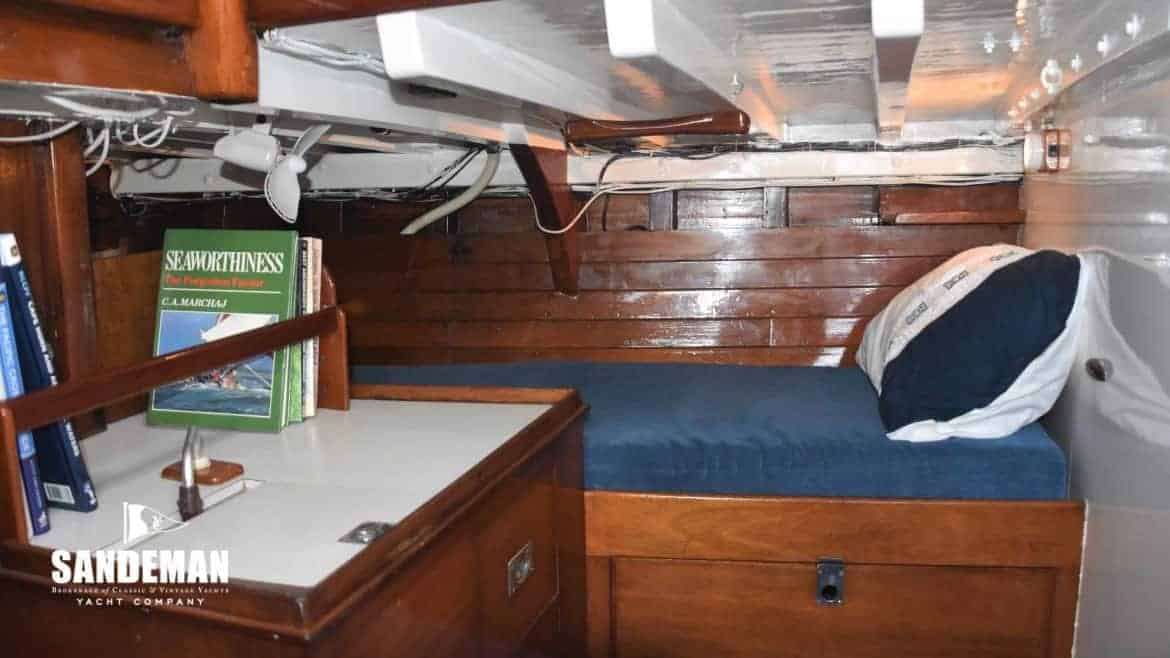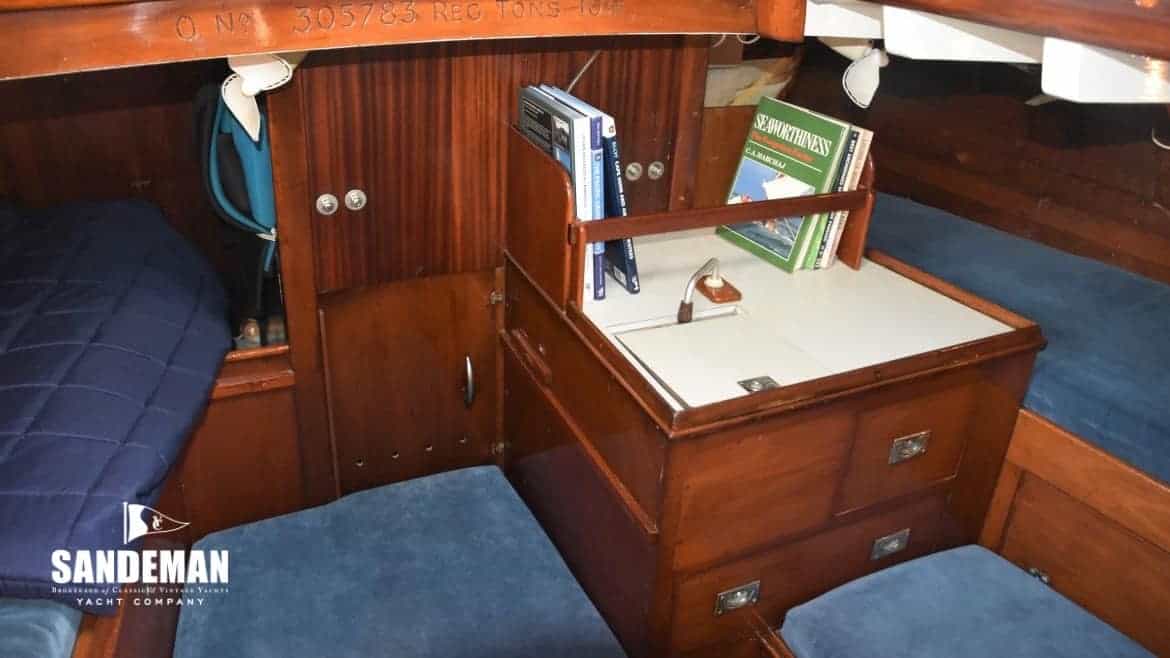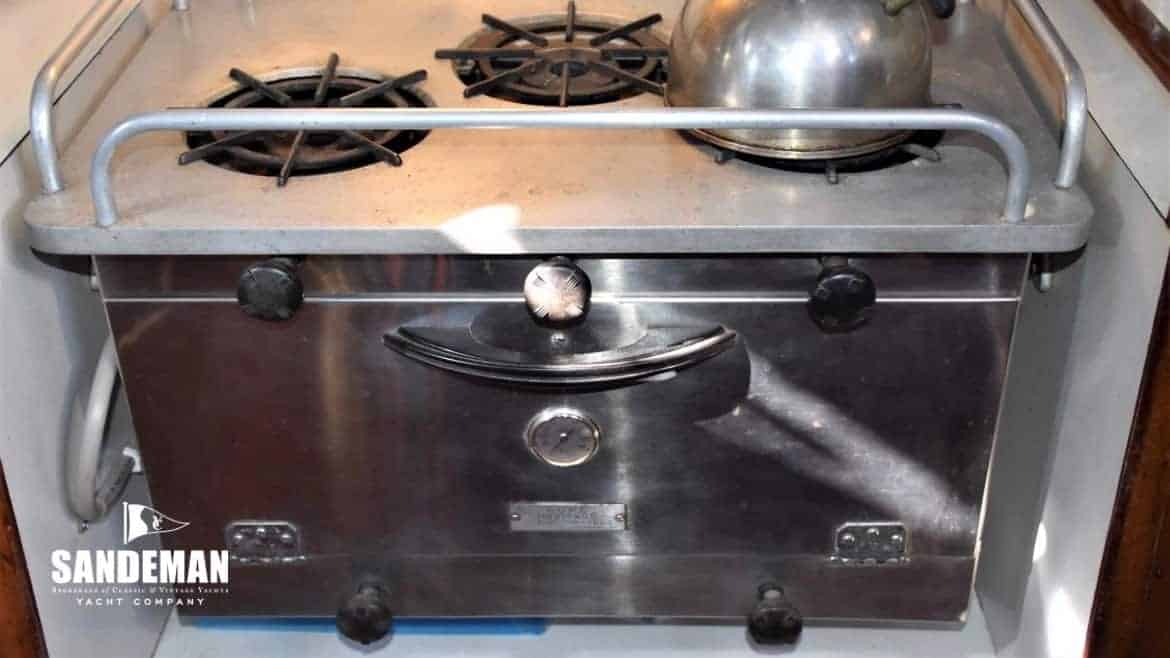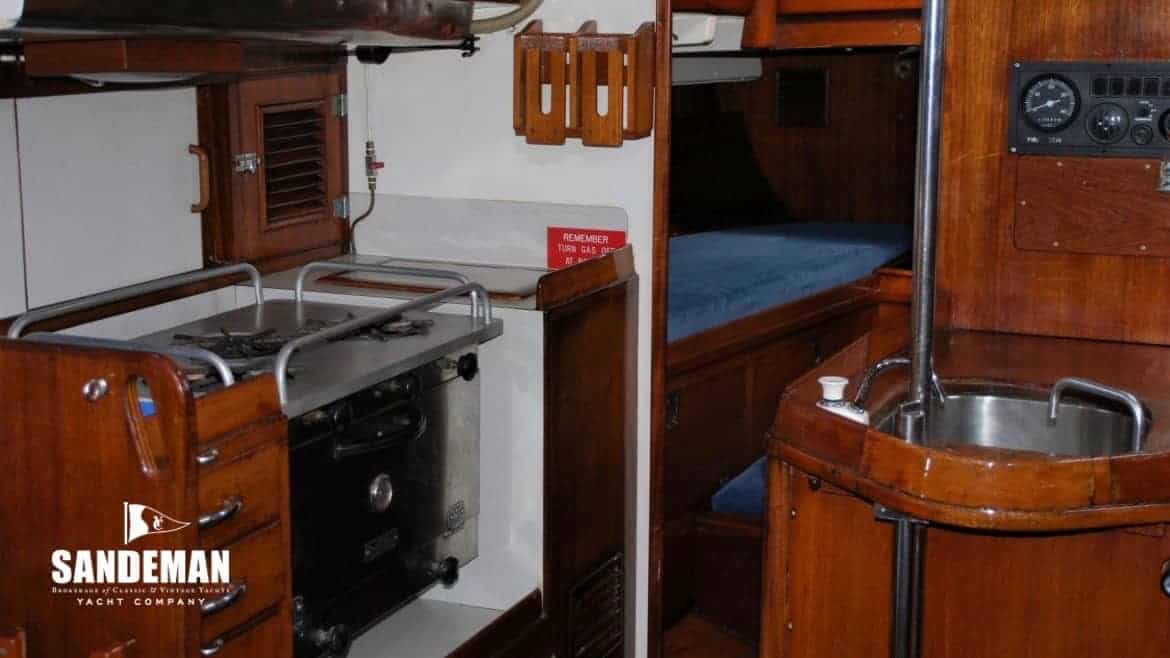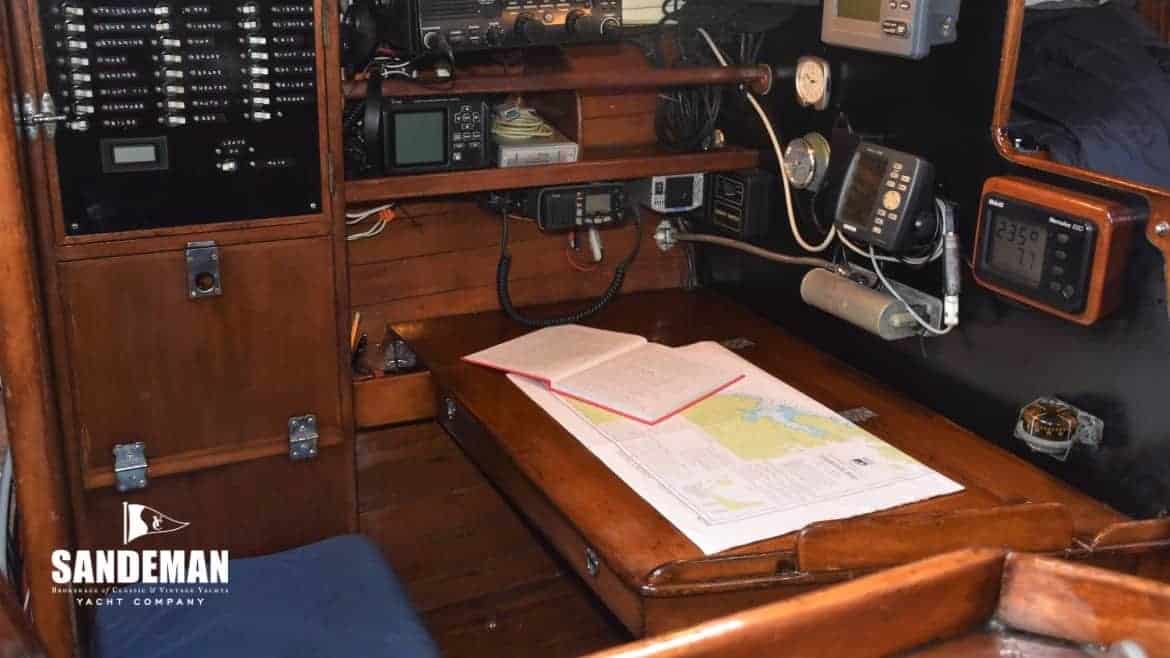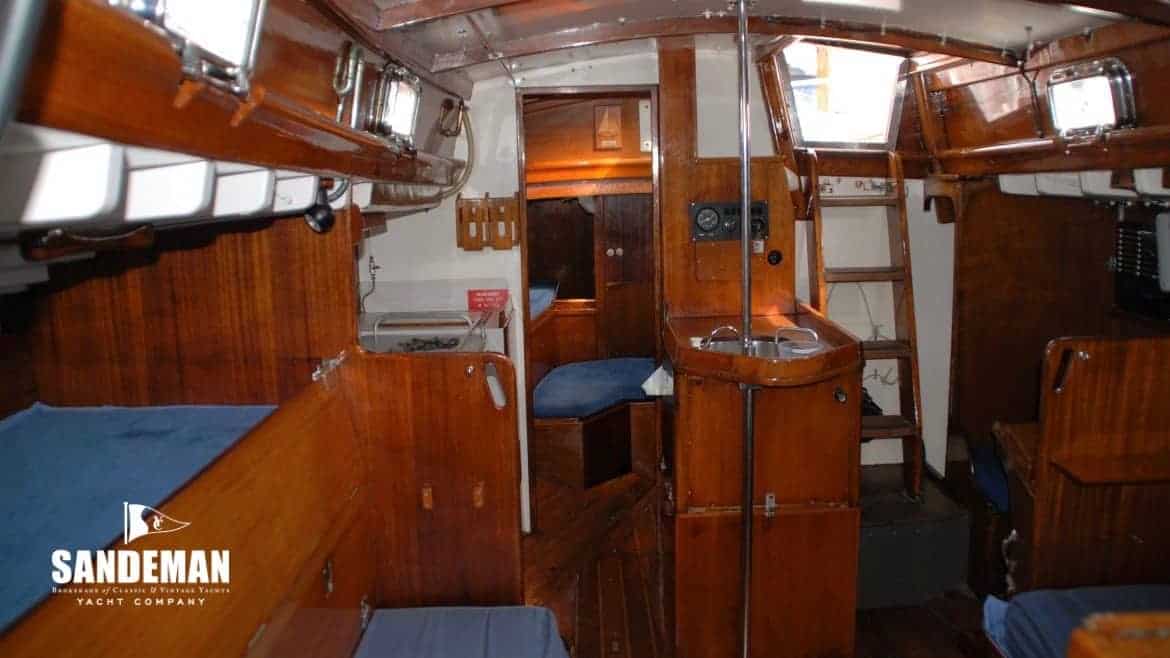Particulars
- See This Boat's Main Listing on the Web
- Length:
- 39 ft 9 in
- Type:
- Sail
- Hull Material:
- Wood
- Designer:
- Sparkman & Stephens
- Builder:
- McGruer & Co.
- Year Built:
- 1965
- Power:
- Yanmar 3GM30F Diesel
- Asking Price:
- $115,000
- Name:
- SUNSTONE
- Location:
- New Zealand
- Contact Name:
- Sandeman Yacht Company
- Contact Phone:
- +44 (0)1202 330077
- Contact Email:
- info@sandemanyachtcompany.co.uk
Off Center Harbor's Remarks
A legendary boat with a remarkable provenance. Her story is beautifully told in the listing, including remarks by her designer Olin Stephens. It is well worth reading even if you can’t buy this boat.
Description from Boat's Main Listing
Broker’s Comments:
SUNSTONE represents a fascinating moment in time in yacht design that may never be bettered. She’s the first Sparkman & Stephens design with a separated skeg-hung rudder (and they got right first time). A centreboarder, she’s a development of the FINISTERRE yawl that satisfied Olin Stephens much more with her greater depth of hull and displacement, and windward and heavy weather ability. In fact, all round ability, very well proven throughout her life as a consistent race winner and world girding cruiser. Especially under the nearly 40-year ownership of Tom and Vicky Jackson whose legendary exploits rewarded them with the Blue Water Medal of the Cruising Club of America among other plaudits, whilst keeping SUNSTONE very authentically and respectfully pure to her fabulous provenance.
Owner’s Comments:
Here’s what you don’t get with SUNSTONE. There is no pressure water, no shower, no hot water, no water-maker, no generator, no freezer, no electronic autopilot. Nor do you get all the maintenance which goes with most of these items of equipment. Here’s what you do get with SUNSTONE. You get the opportunity to add your history to that of a unique yacht, which is robustly constructed, well maintained, a delight to sail and will always take care of you no matter what the conditions. You also get the pleasure of hearing daily in the languages of as many countries as you visit, “Nice Boat!”
SUNSTONE is a delight to sail. She is beautifully balanced and easily driven despite her heavy displacement. Many centerboarders have less than sparkling windward performance. This is not true of SUNSTONE, while she is also quick on a reach. Because her skeg-hung rudder is well aft, SUNSTONE is much more responsive and maneuverable than most long-keeled classic yachts. Though she does not have any current handicap rating, SUNSTONE has been officially weighed and measured for IRC. She has also been computer measured and inclined for IMS and so should easily be rated for ORCi. SUNSTONE has had an excellent racing record spanning 30 years under IOR, IMS, IRC and PHRF.
PROVENANCE and HISTORY
Sparkman & Stephens Design No. 1786
McGruer & Co. Yard No. 611
Many owners of FINISTERRE types accepted the shallow draft and centreboard as followers of fashion, but for this very special yacht’s first owner, Yorkshire yachtsman Eric Barker, it was a necessity: to extend sailing possibilities from his Royal Yorkshire Yacht Club yachting base at Bridlington’s sheltered, but drying harbour. His earlier yachts, including the Peter Brett (of Rival fame)-designed Dee 25 DEBORAH (1954), and the S&S Finisterre Yawl KIFF (1958) were, remarkably, self-built. But for DEB, as she was launched, Barker went to McGruer & Company on the Firth of Clyde, a yard well used to working to Sparkman & Stephens’ exacting specifications.
Experience of the North Seas billows immediately outside Bridlington’s harbour walls will have had an influence on the design – she’s stiff and safe in heavy weather – and Barker’s increasing participation in racing offshore, with KIFF having been a regular competitor in Royal Ocean Racing Club Class II events, including the Fastnet Race in 1959.
Although described in detail by Olin Stephens in his 2002 retrospective book ‘Lines’ as “intended strictly for cruising”, nevertheless Barker was as much an accomplished racer as a cruiser. In DEB’s third season she was RORC Class II(b) 1967 Points Champion, including finishing 4th from an outrageously competitive 27-boat Class II(b) fleet in that year’s Fastnet race to George C Kiskaddon’s San Francisco-based S&S sled, SPIRIT, Dick Carter’s fin-keeled RABBIT II and Piet Vroon’s Frans Maas-designed TONNERRE DE BRESKENS. Her next Fastnet appearance would be under different ownership in the ill-fated 1979 edition.
In 1969 Barker commissioned the 47ft de Vries Lentsch steel cruising ketch MOEG, and DEB moved to a new and happy life on the Irish Sea to become one of the leading lights in the increasingly vibrant Irish Sea Ocean Racing Association (ISORA) events under two ownerships from a Holyhead, North Wales base. First by Solomon “Solly” Parker of the Royal Anglesey Yacht Club. Then, from 1974 as DAI MOUSE III (from the mouse aboard Dylan Thomas’s Wales-located Noah’s Ark in his poem ‘Prologue’), by David Hague of the Royal Dee Yacht Club. Notable events under Hague included: 1978 ISORA Wolf’s Head Trophy winner (top boat on the Irish Sea), and starting but retiring from the tragic 1979 Fastnet Race.
It was from Hague that present owners Royal Ocean Racing Club and Royal Cruising Club members Tom & Vicky Jackson took over custodianship in 1981 and she became SUNSTONE. Their subsequent racing and cruising exploits are now the stuff of legend and listed in detail elsewhere here. Such was the level of her 1980s and 1990s racing success by any standard, that she was rarely out of the yachting press in the days when the magazines and mainstream national newspapers were the only place such news was to be found. Of course, there was also that extra element that only a beautiful, bright finished mahogany, veteran yacht winning over the modern products of the petrochemical industry can engender. Even during their ocean wanders, since 1997 (see below) the Jacksons couldn’t resist entering SUNSTONE in races and regattas along the way – and winning them. SUNSTONE is still and will always be a winner – of yacht races, and hearts and minds.
In ‘LINES’ by Olin J. Stephens (Godine 2002):
“The plans for DEB (now called SUNSTONE) show a boat that has probably had the widest spectrum of usefulness of any designed by S&S. The original owner’s first wish was for a boat with a limited draft that at the same time could have a little water in the bilge and still be knocked down without getting water up onto the berths and lockers. He was willing to use a centerboard and the final dimensions came out as noted above. Intended strictly for cruising, she was built of wood by McGruers at Helensburgh on the Clyde for Eric Baker.
“DEB’s beam is about that of other centerboarders of her length, but her depth of hull and consequent displacement is greater, and her wetted area is no less. The deep hull virtually eliminates the possibility of remaining inverted if rolled over. The fact that the rudder is separated from the keel and centreboard suggests that she was the first S&S design of that type and a precursor to the more racing-orientated boats that followed. In the hands of her present owners, Tom and Vicky Jackson of Southampton, England, who have lived on board and are now taking her on a world cruise, she also had a spectacular racing record. Undoubtedly, they are expert at making her go, but her consistent winning record under a variety of rating rules and conditions has amazed all who have witnessed it. As though proving a point, she was dead last in the 2000 Bermuda Race but came back to win her class in a rough Sydney-Hobart Race. For me, this demonstrates the importance of a combination of winning factors over any one single feature. Despite DEB’s well-known racing and cruising success, her hull form has few, if any, parallels.”
In ‘HEAVY WEATHER SAILING’ by Adlard Coles (editor Peter Bruce)
“Among S&S designed centerboarders, SUNSTONE seems a good example of a centerboarder suited to heavy weather sailing.”
PROVENANCE and HISTORY
Sparkman & Stephens Design No. 1786
McGruer & Co. Yard No. 611
Many owners of FINISTERRE types accepted the shallow draft and centreboard as followers of fashion, but for this very special yacht’s first owner, Yorkshire yachtsman Eric Barker, it was a necessity: to extend sailing possibilities from his Royal Yorkshire Yacht Club yachting base at Bridlington’s sheltered, but drying harbour. His earlier yachts, including the Peter Brett (of Rival fame)-designed Dee 25 DEBORAH (1954), and the S&S Finisterre Yawl KIFF (1958) were, remarkably, self-built. But for DEB, as she was launched, Barker went to McGruer & Company on the Firth of Clyde, a yard well used to working to Sparkman & Stephens’ exacting specifications.
Experience of the North Seas billows immediately outside Bridlington’s harbour walls will have had an influence on the design – she’s stiff and safe in heavy weather – and Barker’s increasing participation in racing offshore, with KIFF having been a regular competitor in Royal Ocean Racing Club Class II events, including the Fastnet Race in 1959.
Although described in detail by Olin Stephens in his 2002 retrospective book ‘Lines’ as “intended strictly for cruising”, nevertheless Barker was as much an accomplished racer as a cruiser. In DEB’s third season she was RORC Class II(b) 1967 Points Champion, including finishing 4th from an outrageously competitive 27-boat Class II(b) fleet in that year’s Fastnet race to George C Kiskaddon’s San Francisco-based S&S sled, SPIRIT, Dick Carter’s fin-keeled RABBIT II and Piet Vroon’s Frans Maas-designed TONNERRE DE BRESKENS. Her next Fastnet appearance would be under different ownership in the ill-fated 1979 edition.
In 1969 Barker commissioned the 47ft de Vries Lentsch steel cruising ketch MOEG, and DEB moved to a new and happy life on the Irish Sea to become one of the leading lights in the increasingly vibrant Irish Sea Ocean Racing Association (ISORA) events under two ownerships from a Holyhead, North Wales base. First by Solomon “Solly” Parker of the Royal Anglesey Yacht Club. Then, from 1974 as DAI MOUSE III (from the mouse aboard Dylan Thomas’s Wales-located Noah’s Ark in his poem ‘Prologue’), by David Hague of the Royal Dee Yacht Club. Notable events under Hague included: 1978 ISORA Wolf’s Head Trophy winner (top boat on the Irish Sea), and starting but retiring from the tragic 1979 Fastnet Race.
It was from Hague that present owners Royal Ocean Racing Club and Royal Cruising Club members Tom & Vicky Jackson took over custodianship in 1981 and she became SUNSTONE. Their subsequent racing and cruising exploits are now the stuff of legend and listed in detail elsewhere here. Such was the level of her 1980s and 1990s racing success by any standard, that she was rarely out of the yachting press in the days when the magazines and mainstream national newspapers were the only place such news was to be found. Of course, there was also that extra element that only a beautiful, bright finished mahogany, veteran yacht winning over the modern products of the petrochemical industry can engender. Even during their ocean wanders, since 1997 (see below) the Jacksons couldn’t resist entering SUNSTONE in races and regattas along the way – and winning them. SUNSTONE is still and will always be a winner – of yacht races, and hearts and minds.
CONSTRUCTION
Built to Lloyd’s 100A, SUNSTONE’s robust construction and splining has allowed her to keep her brightwork finish as well as her fair hull shape
– Carvel planked 1 1/4 in Honduras mahogany
– Close-planked and splined
– Long plank scarfs bridging 2 x frames
– 4 x Garboard planks of teak
– All frames (on 9-10″ centres) large section, laminated afrormosia
– Composite longitudinal “spine”
– Wood keel laminated with no scarfs
– Central section floors stainless steel bolted to mast step/ centreboard case
– Very long stainless steel mast step
– Tied to centreboard case which lies under saloon sole
– Unballasted stainless steel centreboard
– Stainless steel centerboard case extends through lead keel to form shoe under it
– Afrormosia knees and other floors
– Silicon bronze screws and stainless steel bolts
– Bronze hull strapping from the chainplates diagonally down to the rabbet
– Coach house sides are solid 1″ teak, through bolted to carlin and deck beam ends
– Coachroof is ply, covered with resin impregnated cloth and painted
– Raw teak over plywood deck (renewed 2000)
– Teak bulwarks and covering board
– Ash deck beams
– Skeg and rudder of laminated afrormosia with stainless steel strapping
